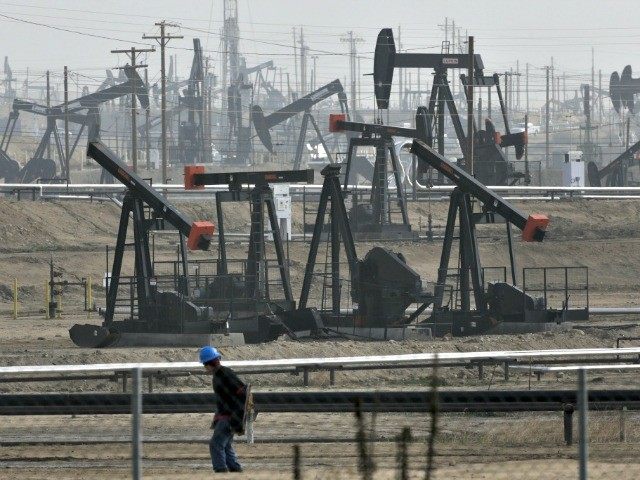The global shock from the release of the U.S. Environmental Protection Agency (EPA) long-postponed draft report stating that hydraulic fracturing (fracking) has not had a “widespread, systemic impact on drinking waste” caused “cheap” natural gas prices to collapse another 16 percent.
As Breitbart News previously reported, energy leases on federal lands that were slashed by 52 percent during the Obama Presidency over “environmental concerns” are now cleared to quadruple–at least–over the next few years. The new volumes will push prices lower.
The fracking boom only broke oil price in the last twelve months, but natural gas is down by 83 percent since 2000, as the combining of fracking with horizontal drilling caused a massive increase in U.S. production. Since 2011, the United States 2011 has been the world’s largest oil producer, and those numbers continue to accelerate.
The American natural gas average “Henry Hub” selling price of $2.59 per thousand cubic feet (mcf) compares to $9.50 per mcf in Europe, $10.25 per mcf in China and $14 per mcf in Japan. Since natural gas is the key energy source for industry, America’s new manufacturing competitiveness is directly traceable to cheap natural gas that is getting even cheaper.
From what looked like the beginning of a major recovery in gas producers, the price hit a $3.15 per mcf potential break-out to the upside on the NYMEX commodity futures exchange. But as rumors began circulating that the Obama Administration was being forced by the rise of ISIS and the confrontation with Russia to support fracking, prices seemed to stabilize.
This EPA report is a landmark political shift for a Democrat administration, since environmentalists who oppose the method of extracting natural gas from rock formations have long argued about negative impacts of methane releases on global climate change, and the allegedly poisonous effects of the technique that releases gas and oil from between rock formations on clean water supplies. But it seems that the economic treasure trove of the U.S. Marcellus and Utica shale regions, holding reserves of over a quadrillion cubic feet of natural gas, won the day.
On the same day as the EPA announcement, the U.S. Energy Information Agency (EIA) released its weekly inventory report, which highlighted the stockpiles of natural gas as of May 29. Inventories rose by a stunning 132 billion cubic feet for the week to a total of 2.233 trillion cubic feet. Inventories now stand 50.7 percent higher than last year.
Natural gas traders say that the bearish fundamental news of the past week threatens to break the long-term price support for natural gas at of $2.54 per mcf that was hit on April 27. Any trade below that price would cause panic selling and could see prices break $2 per mcf.
The new EPA release came as the Organization of Petroleum Exporting Countries (OPEC) released its five-year strategy forecast at their annual meeting in Vienna, Austria. Breitbart News reported that OPEC had effectively conceded defeat in its anti-shale oil war with the U.S., and the cartel report predicted a continued rise in U.S. production of U.S. domestic energy and a shrinking market for OPEC exports.
From 1870 to 1975, American world dominance in oil and natural gas production provided American manufacturers with hyper-competitive, cheap and bountiful domestic energy supplies. But the huge costs of compliance with ever-rising environmental mandates encouraged OPEC imports and devastated American manufacturing’s key “comparable advantage.” The result was a loss of over half of U.S. manufacturing jobs in the last 30 years, and the build-up of $10 trillion in national debt.
But the U.S. fracking boom caused world oil prices to fall by 50 percent in the last year. The U.S. Bureau of Economic Analysis said last week that America’s balance of payments deficit plunged 20 percent in the last two months due higher domestic energy production.
The Bureau of Land Management’s annual new oil and gas leases on federal lands fell from over 9,000 in 1988 to 1,100 last year. Now, the EPA determination seems destined to free-up millions of acres of never-developed federal land to power the next leg of the U.S. fracking boom.

COMMENTS
Please let us know if you're having issues with commenting.